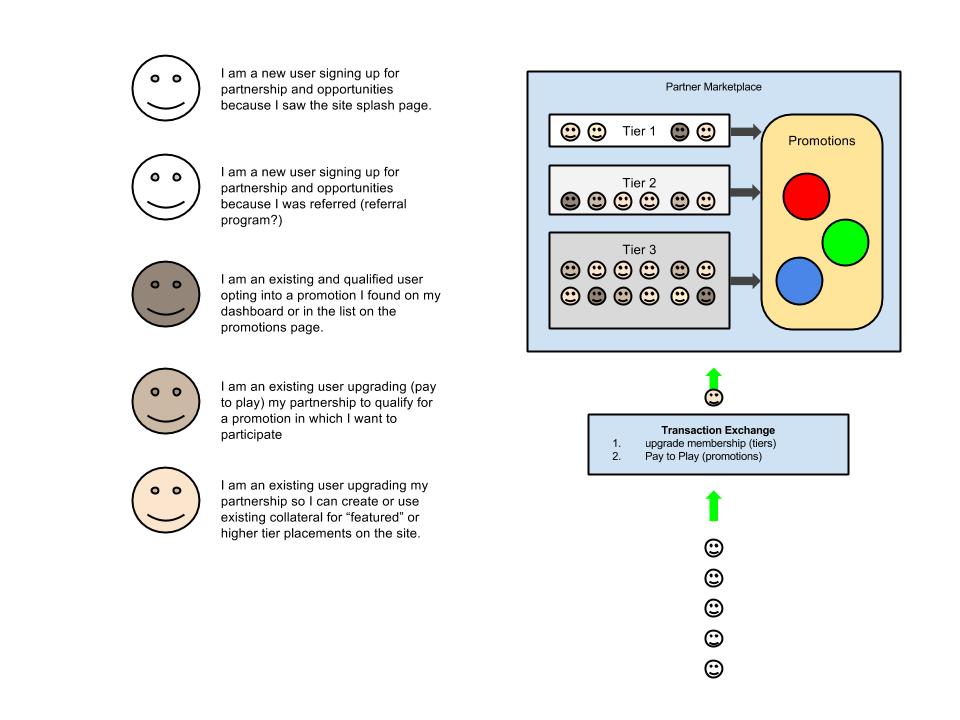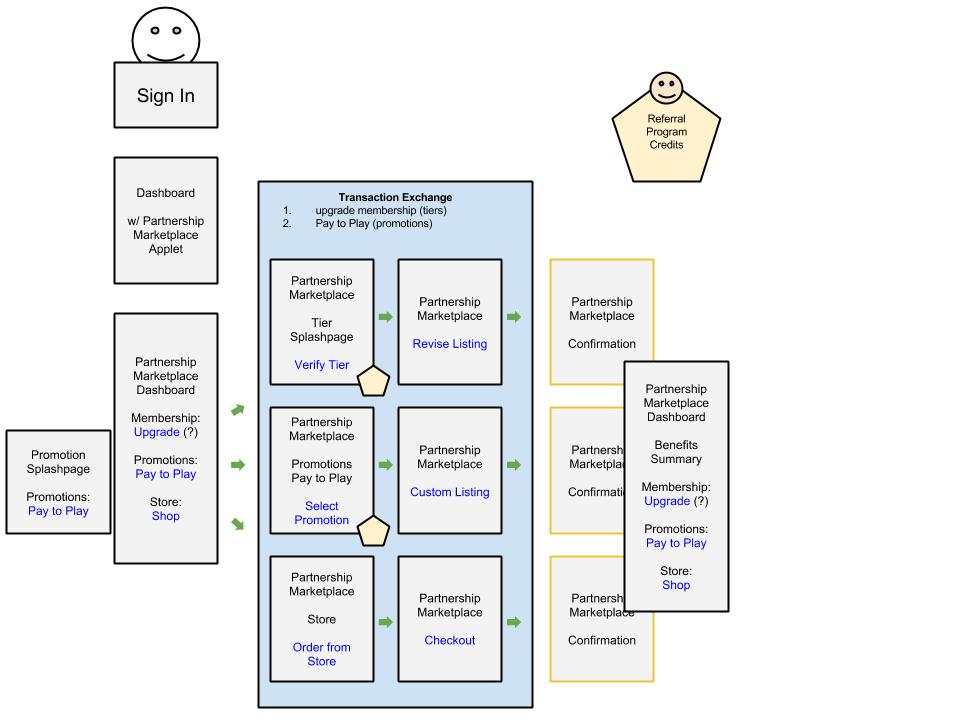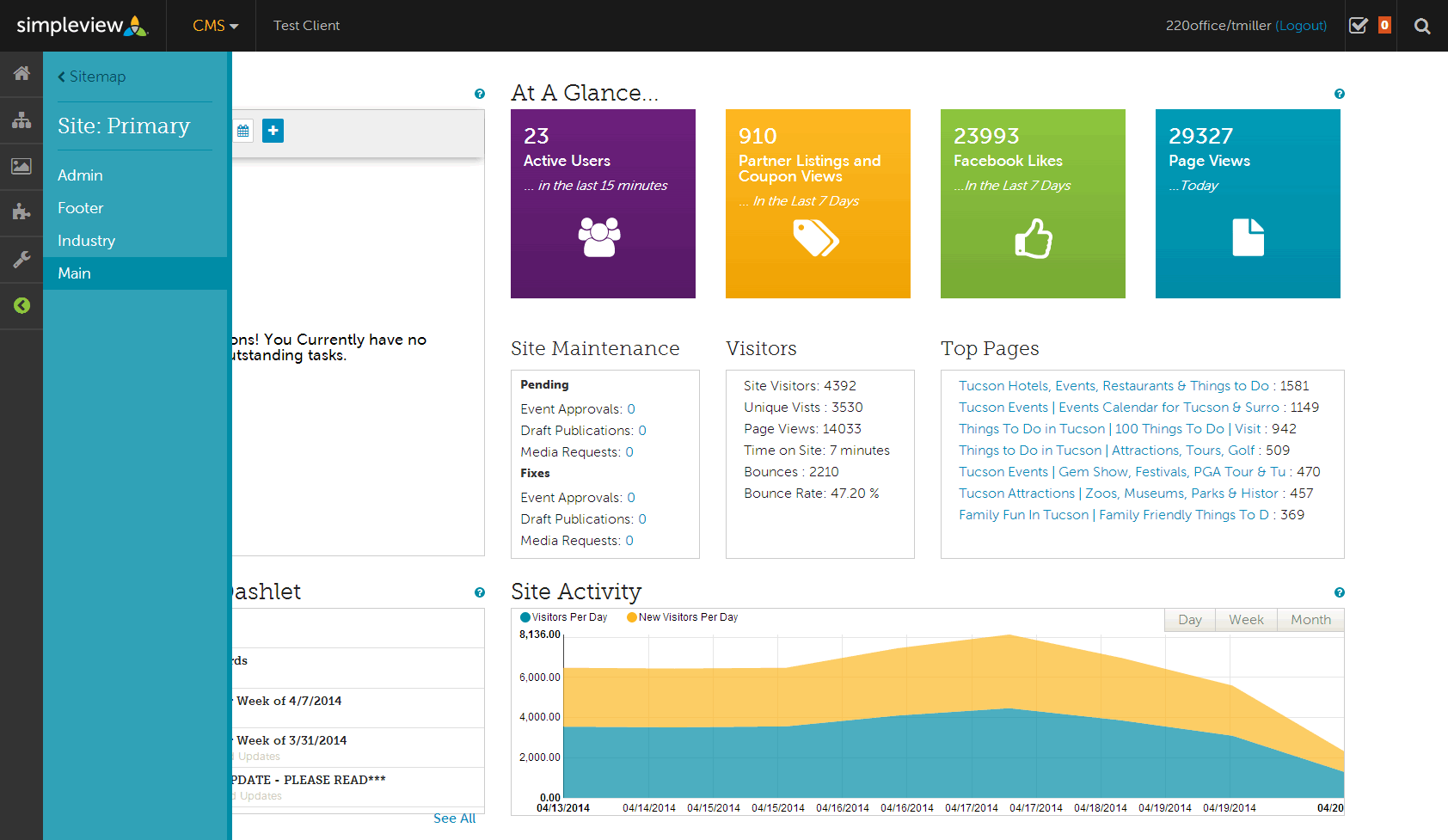Destination MarketPlace
Destination Marketing
Most cities, states and countries have Organizations that promote tourism. This can include vacationing tourism as well as convention tourism. These Destination Marketing Organizations (DMOs) come to Simpleview because SV is an expert in destination marketing and offers a complete suite of technology products that allow DMOs to represent their destination online to the world with greater reach.
DMOs work with local businesses and vendors in their promotions. Tourism packages for seasonal peaks and Convention packages include recommendations for local restaurants, shops, sites and activities. These recommendations are created by a collaborative effort between the DMO and its "Local Partner" business. Most DMOs host free partnerships and participation, and many of those offer tiered "Pay to Play" membership.
DMOs do not actually generate revenue from the tourism they promote. Simpleview offers their suite of technology products to help monetize efforts. A full CRM manages the vast network of Local Partners, as well as Convention Sales. Simpleview offers a full CMS to build and maintain beautiful destination websites as well as integrate with the CRM to support local business listings on that website. An Extranet offers a membership space for the local partners to manage their data, memberships, and relationship with the DMO and the website. Simpleview also offers other tools such as map builders, form builders, a Destination Travel Network (DTN) and more to allow DMOs to fully partner with local businesses, promote aggressively, and monetize their efforts.
Planning a Marketplace
As principal UX Designer, I was tasked to imagine and design a Marketplace that would integrate and enhance with the CRM and Extranet products. The DMOs originally requested a way for local partners to renew their own memberships (and dues) through their extranet accounts. This request created a "transaction space" that could scale into an excellent revenue opportunity.
Through the extranet, the DMO could offer memberships as well as promotions and scheduled event participation (conventions). For instance, a local partner could choose from among several membership tiers based on their preference of benefits and participation activity.
The Marketplace also offered the opportunity for "Pay to Play" promotions. Local partners would see promotional extranet landing pages through their account, and opt-in for participation through a marketplace transaction.
The Marketplace also could serve as an online store for DMO merchandise. This merchandise included typical destination t-shirts, caps, keychains, etc, as well as event branded items for conventions and seasonal festivals. When a local business became a member or participated in "pay to play" events, they could purchase merchandise to offer through their storefronts.
With these imagined opportunities, I was able to craft a space with user stories, requirements, and personas.


The User Journey
Understanding the users, the offerings and the benefits, I was able to cobble the Journey Maps and User Flows together.

The Wireframes
With the User Journey fully mapped, I was able to wireframe each step and space of the Marketplace, quickly defining and answering user needs and requirements.

The Dashboard - The extranet dashboard features typical membership data, benefits summary, site analytics. I added a Marketplace rail that would feature promotions, events, seasonal opportunities and membership renewal alerts. The membership renewal alerts would also feature in the membership area of the extranet applet.

Membership and Promotion Splashpages -These pages would exist on the extranet as marketing to engage local partners directly.

The Marketplace Dashboard - In the marketplace, I wanted to give the local partner a clear view of their full participation as well as new or open opportunities. Opportunities could include membership renewal, membership upgrade, promotions and events, and premium site and DTN listings.

Marketplace Collateral Management - The user needed a central space to manage/maintain current listings, promotions and participation. For every participation, the customer would get a listing for their business. These listings would be included in, for example, premium featured areas of the Destination website (in addition to the basic business listing), event programs, event microsites, promotional materials such as posters, tv ads, radio ads and DTN features.


Promotional Home Page - Every marketplace opportunity, promotion, and membership level would have a main page and starting point. Local partners would access these informational and transactional pages through their extranet dashboards, marketplace dashboards, marketplace collateral management interfaces and/or promotional landing pages. The could opt into the opportunity as well as choose the preferred benefit options.

Create Custom Listing - When a local partner opted into a promotion or opportunity, they would need to build a custom listing as included in their participation. They would be able to use existing materials or create new content.


Merchandise Inclusion and Sales - When a local partner opted into a promotion or opportunity, DMO branded merchandise could be included as a benefit. Likewise, local partners could purchase merchandise directly through a typical shopping cart.

Gratification by the Dashboard Light - No matter how partners chose to promote their businesses through the DMO offerings, they would always return to a current and confirmational dashboard.
Summary
The wireframes were reviewed with our CRM specialists, DMO Membership Relationship specialists, and other SMEs for fully detailed requirements. Once these wireframes represented a successful experience, they were handed off and transformed by the development team. Having designed the CMS and CRM products, I had already created the Simpleview pattern library, styles and definitions.
